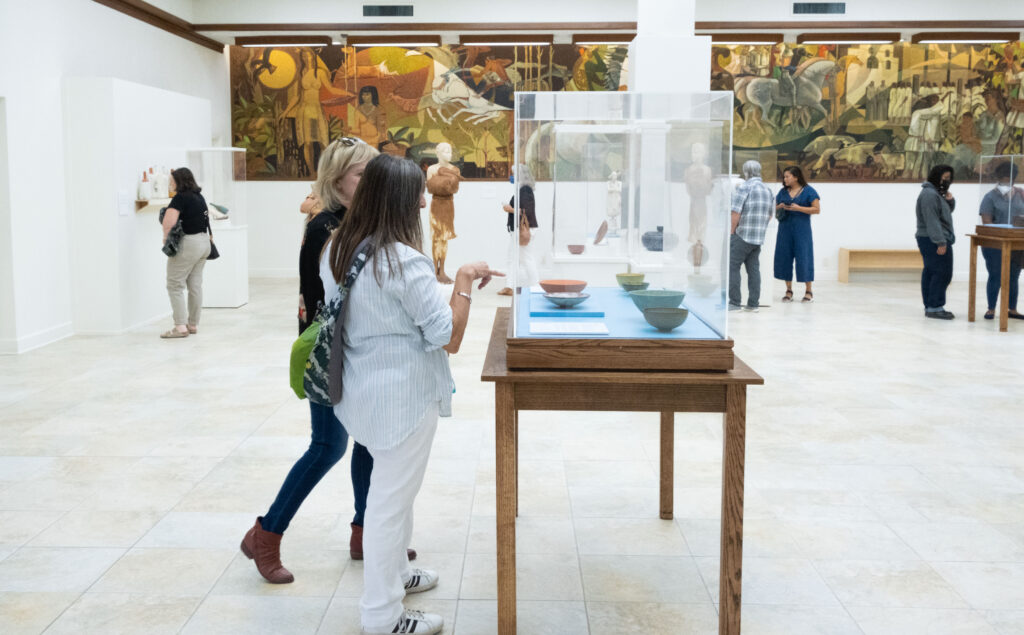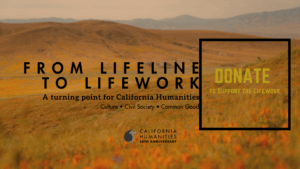Above: Breaking Ground: Women in California Clay at the American Museum of Ceramic Art (AMOCA) in Pomona, California. Photo courtesy of AMOCA.
In recognition of Women’s History Month, we interviewed Beth Ann Gerstein, project director for the Humanities for All Project (HFAP)-supported Breaking Ground: Women in California Clay at the American Museum of Ceramic Art (AMOCA) in Pomona. AMOCA’s Executive Director since 2014, Gerstein also serves on the board of Watershed Center for Ceramic Arts in Maine, and previously served for 20 years as Executive Director for The Society of Arts and Crafts in Boston, Massachusetts.
Recognizing the American Studio Ceramic movement’s traditional focus on prominent California men, Breaking Ground focuses solely on California women artists, with AMOCA also hosting exhibition-related public programming to provide enriching opportunities for a broad range of visitors. Closing out one-year as a first-time HFAP grantee, the project’s final public program will take place online on Thursday, March 9, from 11:00 AM-12:00 PM PT, and will explore the influence of feminism on contemporary ceramics (register here).
Can you share a little about AMOCA’s mission and history with our readers?
Founded in 2001 and formally opened in 2004, the American Museum of Ceramic Art is the largest ceramics-only museum in the country. Our mission is to “champion the art, history, creation, and technology of ceramics through exhibitions, collections, outreach, and studio programming.”
For its first nine years, AMOCA occupied a 3,800 square-foot storefront in downtown Pomona, an economically struggling city where art is an important element of current community revitalization efforts. Despite the modest space, we organized dozens of thought-provoking exhibitions that drew local and regional audiences. Eventually, severe space constraints and the need to store our growing permanent collection led to the purchase of a larger facility.

In 2011, AMOCA moved into the former Pomona First Federal Savings and Loan headquarters, a community landmark that included a 77-foot mural by renowned Southern California artist Millard Sheets. This 51,000 square-foot facility now includes exhibition galleries, a ceramics studio, staff offices, museum store, and storage for the permanent collection. We’re currently in the midst of an extensive renovation project that will re-open our resource library and carve out a new, dedicated event space and lecture hall.
What inspired you to do this project?
The important American art movements of the last century are often regarded as the purview of the East Coast. Yet it was here, in California, that the concentration of ceramic production facilities (the world’s largest in the 1940s and 1950s) and burgeoning ceramics programs at higher educational institutions facilitated the rise of a wholly new and uniquely American art movement: American Studio Ceramics. Another anomaly is that the history of this art movement has been told almost exclusively through the works of prominent California men.
Breaking Ground: Women in California Clay takes on the important project of recentering the story of the American Studio Ceramics movement by presenting a survey of the last 100 years of contributions by 44 women artists. This exhibition and accompanying catalog present a more accurate and inclusive understanding of the American Studio Ceramics movement.
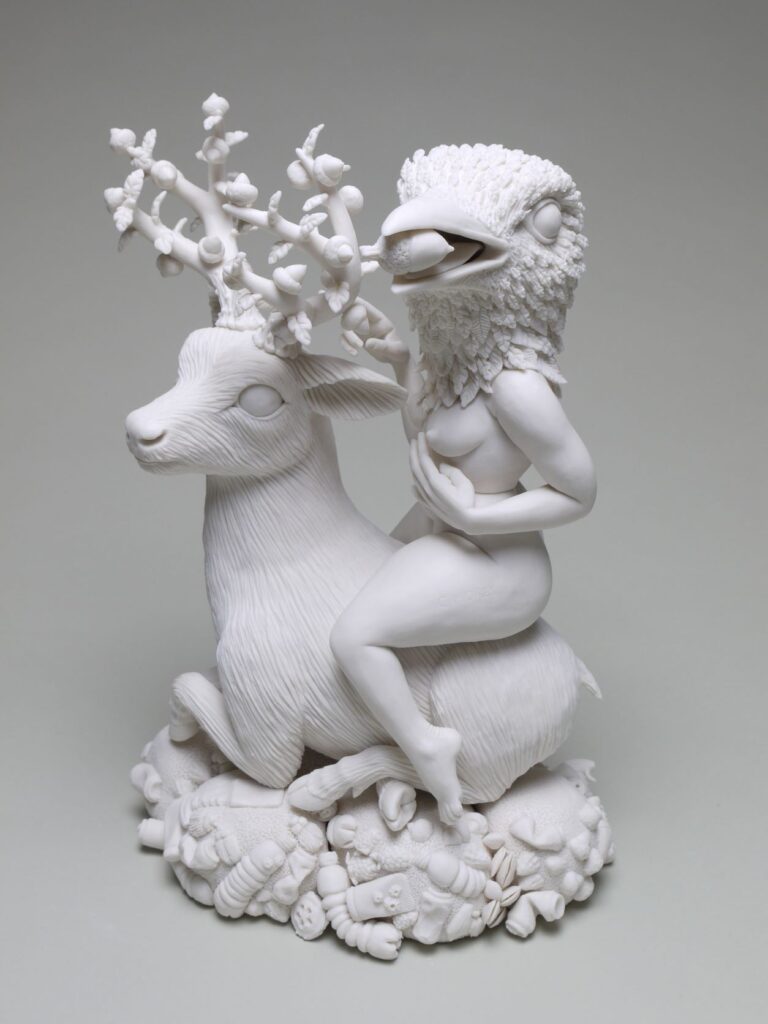
Crystal Morey, The RePlanting, 2021. Porcelain. 12.5 x 8 x 6 inches. Collection of the Artist.
Courtesy of AMOCA.
Jenny Hata Blumenfield, Smoke and Mirrors, 2021. Ceramic, Lucite. 34.5 x 21.5 x 22 inches.
Courtesy of AMOCA.
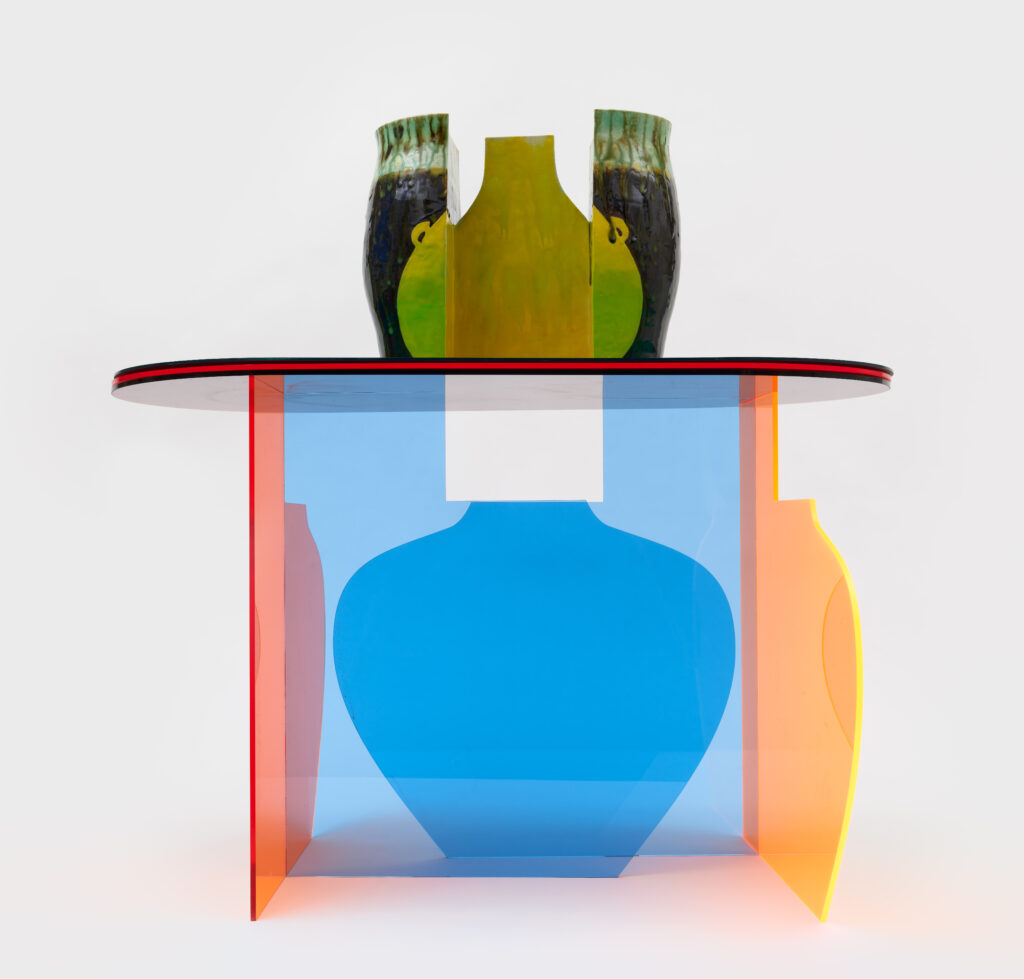
How did you go about curating the exhibit? What contributions did artists and humanities experts make?
We developed an extensive list of women artists from California working in clay from the past 100 years. Jo Lauria, who is a former curator at LACMA, agreed to serve as a co-curator on the exhibition. Together, we decided to focus on women who had a significant impact on the field through their artwork, teaching, or other expertise. Breaking Ground was originally going to be in just one of our galleries, but because there were so many important artists that needed to be included in the exhibition, we decided to expand and installed it across all three ground floor galleries at AMOCA. At this point in the process, we invited UC Berkeley Professor Edith Garcia to join the curatorial team and add her voice to the conversation. In an effort to include multiple artworks by each artist (rather than present a large survey exhibition), we limited our selection to 44 artists. As we organized the exhibition, we decided there would be three “chapters” or groupings of artists. Chapter 1 included the trailblazers, Chapter 2 was artists exploring the “Body Politic,” and Chapter 3 is artists working “Now.”
Humanities advisors and outside experts in the field were invited to respond to our selection of artists and provide ideas and feedback on public programs, didactic material, and K-12 and adult content for tours, field trips, and workshops.
In addition to the exhibit, you offered a rich array of public programs aimed at engaging diverse audiences. What new audiences did you want to reach and what kinds of outreach and activities did you employ to engage them?
We want to connect with local, national, and even international audiences, and to reach viewers of all ages, backgrounds, and experiences. Specific Breaking Ground programs included members tours for behind-the-scenes access, an in-person Spanish-language tour and Spanish text available in galleries for Spanish readers, a Food Fiesta all-ages family day that took inspiration from Christina Erives’s vault installation, a drop-in Sketch Day in the gallery with artist Kim Tucker, and a Curator Talk with Jo Lauria and Edith Garcia (in person and recorded). We also offered related programming in the Studio, where Christina Erives led a hands-on workshop focusing on surface decoration. And we held a free public reception to celebrate the opening of the show, continued our monthly First Fridays pay-what-you-can days, participated in Smithsonian Magazine’s free day and SoCal Museums’ annual Free for All Day, and led numerous school tours and activities. Our final public-facing event associated with the exhibition, a virtual roundtable featuring Breaking Ground artists, “Feminist Explorations in Contemporary Ceramics,” is coming up on Thursday, March 9.
We’re always trying to get the word out about AMOCA, and this California-centered exhibition featuring many local artists offered a great opportunity to connect across the Golden State.
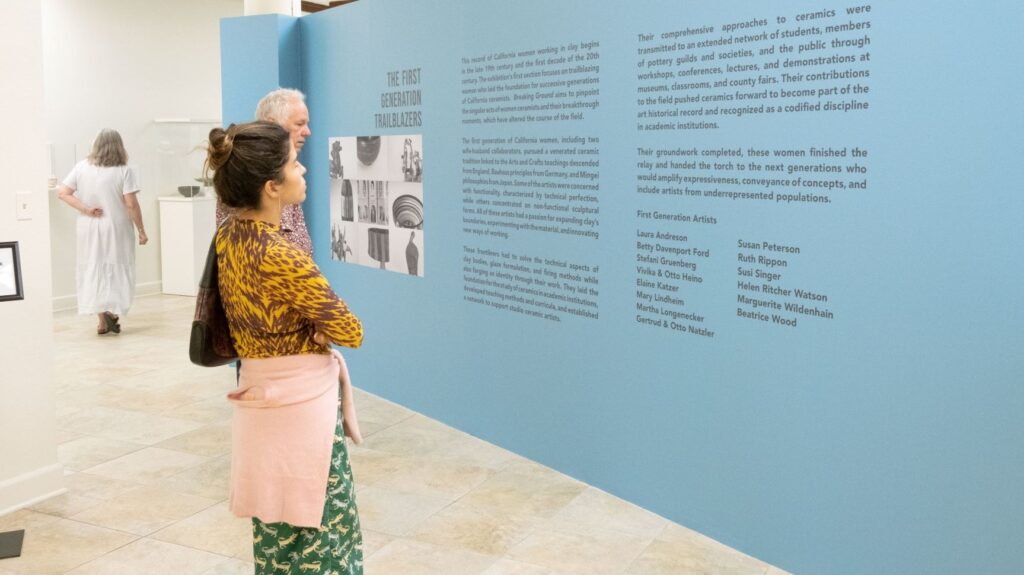
Overall, what has been the response to this project by the public as well as the art world?
The response to the exhibition, public programs, and catalog has been tremendous. Museum attendance is up, and practically every public program offered has had good enrollment and participation.
Did California Humanities’ support make a difference to the way you approached this project or will approach future projects?
This was our first grant through California Humanities. We found the application process helped us to focus our project through a humanistic lens. In our exhibition planning and programs, we are always looking to encourage a deeper understanding of culture, history, and contemporary issues, and support from California Humanities allowed us to effectively engage other voices from the field and widen our view for public programming associated with the exhibition. We will certainly carry our successes in Breaking Ground presentation and programming forward to upcoming projects and exhibitions at AMOCA.
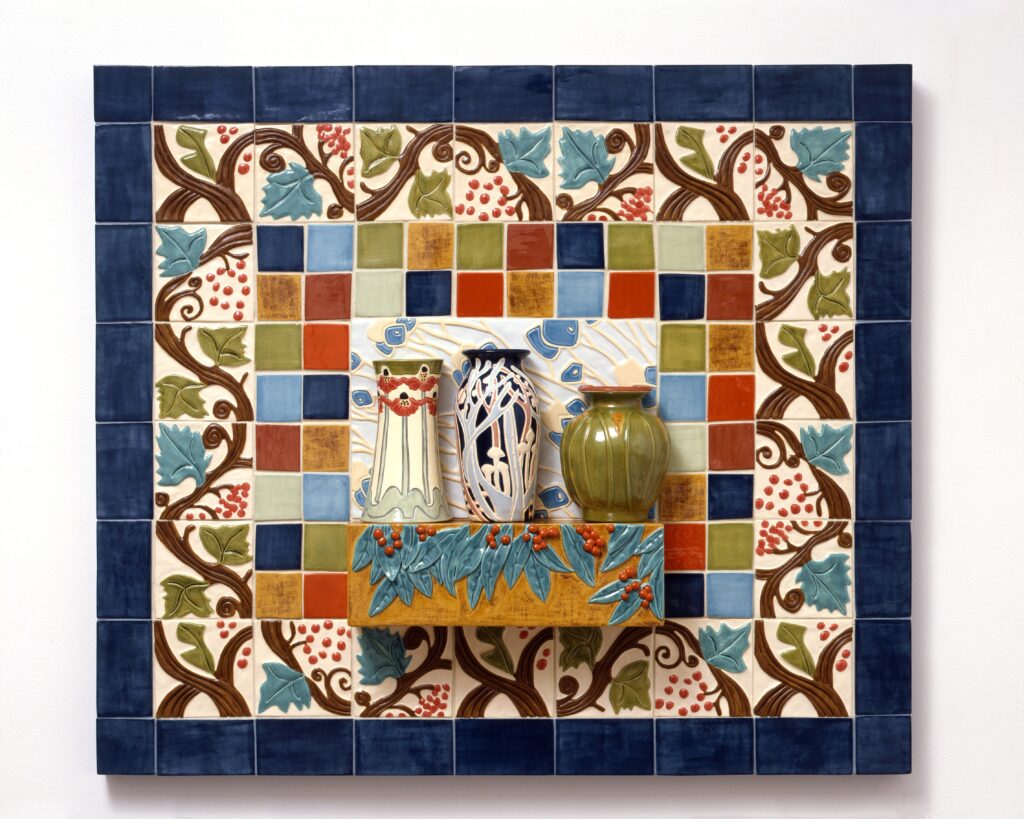
What advice do you have for colleagues in the public humanities field?
Remember: engaging diverse groups in reflecting on identity, heritage, traditions, and history enriches our community and our programs.

